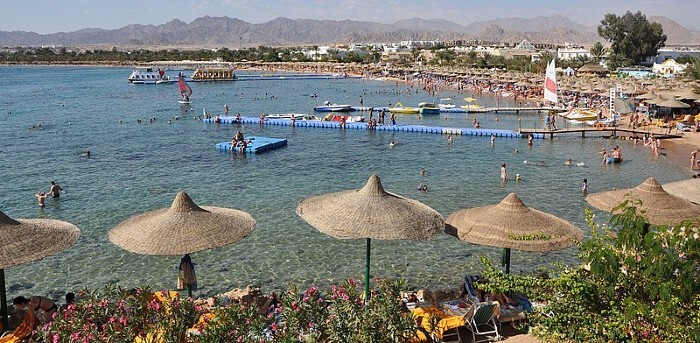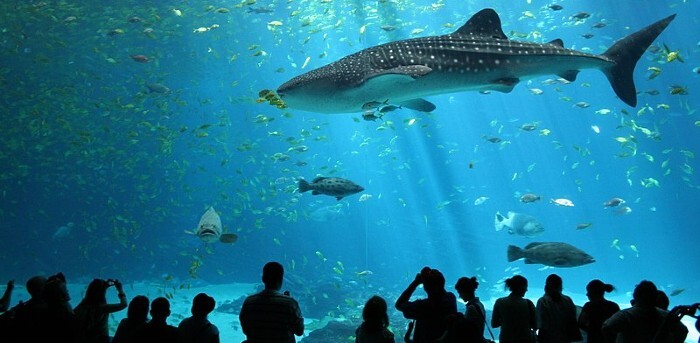Why Are We So Scared of Sharks?

It seems obvious why, every summer, we keep one eye open as we frolic in the ocean for a finned monster with a John Williams soundtrack. Prior to the 20th century, though, sharks didn’t top anyone’s list of even specifically aquatic fears. (Remember, we were just figuring out the whole “sanitation” thing.) It took a few well-publicized (exactly because they were shockingly rare) serial attacks, along with some help from Hollywood, to turn a species just trying to mind its own business into a national phobia.
Shark Attacks Are So Rare, You Guys

Let’s kick this off with some stats: Only about four people per year are killed in unprovoked shark attacks in the whole world. For real, you’re more likely to be killed by a sand hole.
Only Three Species Attack

There’s really only three shark species that are responsible for nearly all unprovoked fatal shark attacks: bull sharks, great whites, and tiger sharks. The other hundreds of species of sharks don’t give a shit about you.
Scientists Used to Think Sharks Couldn’t Kill Humans
Shark attacks were so rare that before they had internet-connected databases to cross-reference them, scientists didn’t think it was even a possibility. In the 1890s, an eccentric tycoon offered a cash reward for any evidence of a single shark attack off the northeast coast of the United States, and one scientist told the media in early 1916 that "it is beyond the power even of the largest Carcharodon to sever the leg of an adult man" and “there is practically no danger of an attack from a shark about our coasts.” Of course, he was immediately proven wrong.
Picture It: The Jersey Shore, 1916

But it’s understandable, then, why nobody was scared to take a trip to the Jersey Shore later that summer. In fact, it was even busier than usual, as thousands sought relief, however wrong-headed in light of modern knowledge of viral transmission, from a raging polio epidemic and heat wave at the beginning of July. They didn’t even have guidos yet.
The Jersey Shore Shark Attacks
That all started to change on July 1, when a 25-year-old man was attacked by a shark while out for a swim and eventually bled to death. Five days later, another young man died after a shark bit off both his legs. Still, these attacks could be written off as flukes as long as nobody else got hurt.
The Attacks Continue
It started getting hard to deny they had a selachimorphic serial killer on their hands when a local man spotted a shark in the tiny town of Matawan, 11 miles inland and 75 away from the site of the original attack. He ran through the streets warning people away from the creek, but he missed a group of boys already headed that way, one of whom was killed by the shark, who then killed the man who recovered his body. As if that wasn’t dramatic enough, just a few hours later, another boy was attacked a few miles away. This shark was a real attention whore.
The Media Feeding Frenzy

Naturally, the media seized on the story like it was a teen skinny dipper. Reporters breathlessly relayed tales of the “sea wolf” of New Jersey and a totally unexplained uptick in shark sightings all down the East Coast. Beaches became sunny ghost towns, and tons of people wrote directly to the president, who declared a national “war on sharks.”
Shark Hunts

“War” isn’t too strong a word. Rewards were offered for the capture of the shark responsible for the Jersey Shore attacks and also just any shark, leading entire posses to take to the seas with pitchforks and spears or just hang out on the shore and shoot or throw dynamite at “any movement they saw,” while the government put up shark nets and armed lifeguards with harpoons and dead lambs for bait. It was a rough time to be anything in the water.
The Matawan Maneater

Eventually, the “sea monster” of Jersey became known as the “Jersey maneater” or (preferably, because it’s less evocative of Atlantic City motels and also alliterative) the “Matawan maneater.” It’s not even clear that it was a single shark, but someone did eventually catch a great white with 15 lbs. of dude in its stomach, so there’s a likely candidate.
The Worst Shark Attack in History

Shark mania died down fast as people got distracted by that whole “world war” thing, but the second one fed it even further as tales of the U.S.S. Indianapolis spread. In 1945, the ship was attacked and sank in the middle of the Pacific Ocean, attracting the attention of apparently every shark in the area, who fed on the survivors for several days in what became the worst shark attack in history. Nearly 1,000 people died, as many as 150 of them by shark.
Black December
Global fear of sharks was solidified by the perfect sharknado of events that led to the Black December attacks off the South African coast in 1957. The attacks, which actually lasted through the next spring, left six people dead.
Along Came Jaws

(Universal Pictures)
Not that any help was needed, but in the mid ‘70s, the Jaws novel and subsequent movie did exactly not that. The portrayal of a great white shark as a vengeful slasher villain incited a “collective testosterone rush” against sharks, leading to the population decline of some shark species by up to 89% and author Peter Benchley to later comment, "Knowing what I know now, I could never write that book today.” (“Not me,” Steven Spielberg said in our minds. “Fuck them sharks.”)
The Summer of the Shark
From then on, even as shark populations sunk to endangered levels, just about every shark attack became national news, culminating in the 2001 trend of sensationalist coverage that became known as the “Summer of the Shark.” Another fairly big story that escapes us just now landed on their desks right as summer came to a close that year, but the damage was done. Ironically, the number of shark attacks that year was actually lower than the year before.
The Sharm El Sheikh Shark Attacks

Although shark attacks remain exceedingly rare, an unusual cluster of them occurred as recently as 2010, when five people were attacked in Egypt. In addition to the “unprecedented” nature of the attacks, which made them newsworthy, the sharks had the misfortune to choose victims from several different countries, landing themselves on the front pages of media markets all over the world.
The Spielberg and the Damage Done

Today, people still kill at least 30,000 and possibly as many as 100,000 sharks every year, largely because of the negative public perception of them. That’s a pretty big deal because sharks play a crucial role in the ecosystem of the ocean by eating other animals and keeping their populations under control, so don’t come crying to us when you’re being devoured by super lobsters.
Top image: Universal Pictures